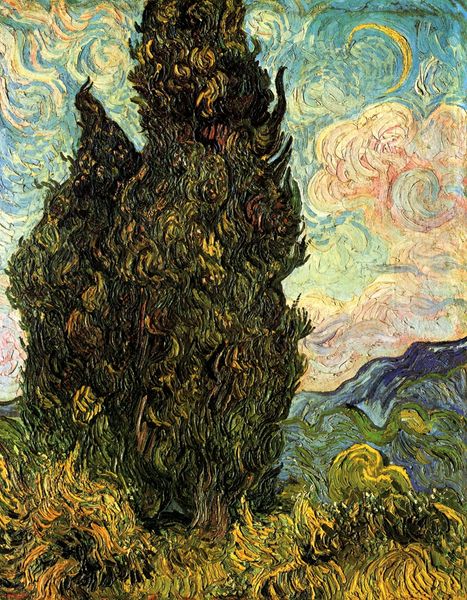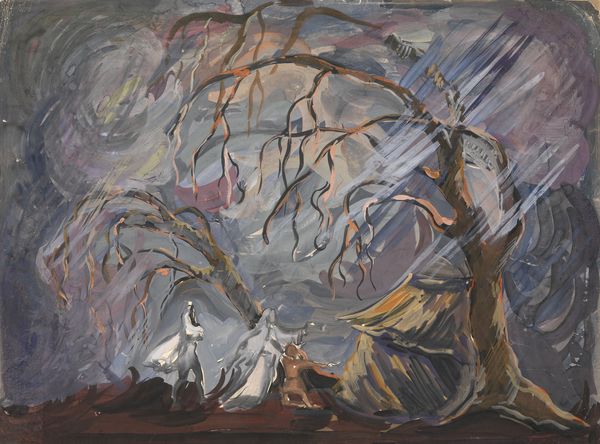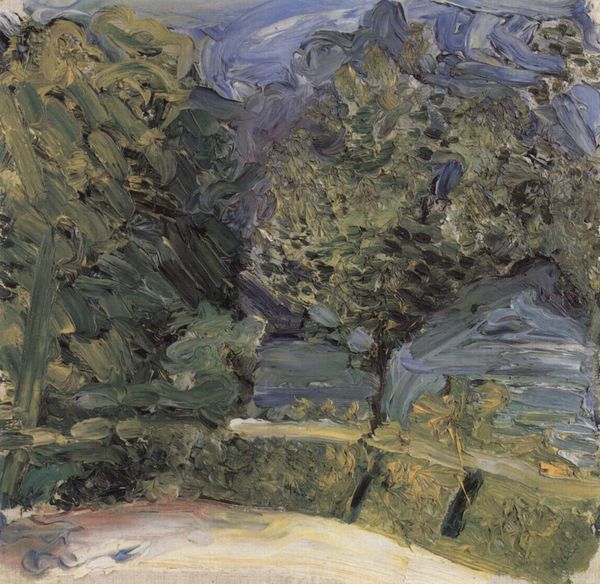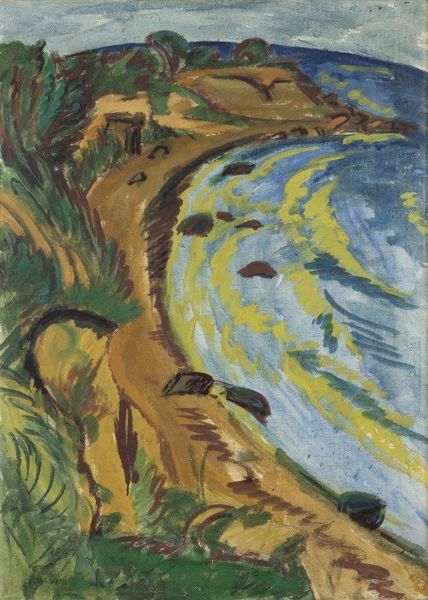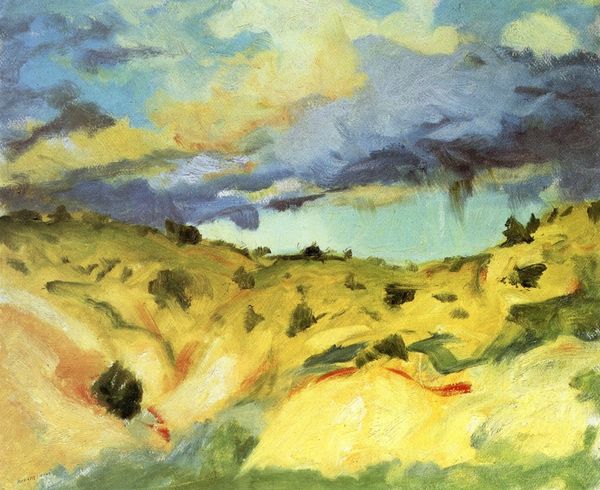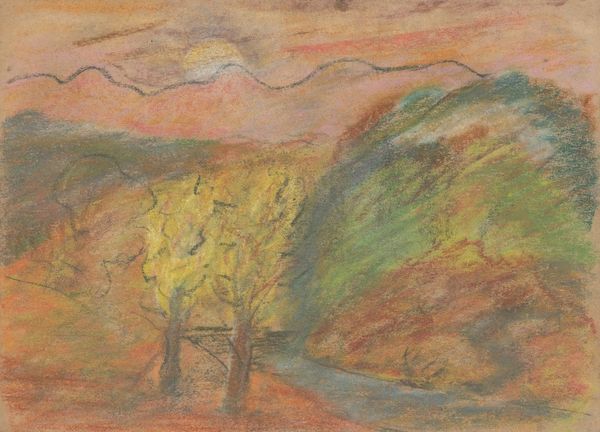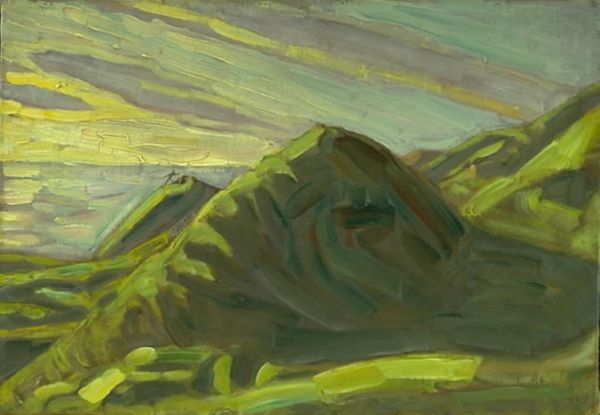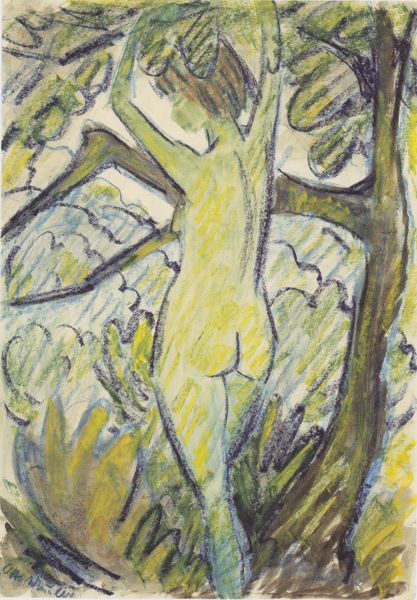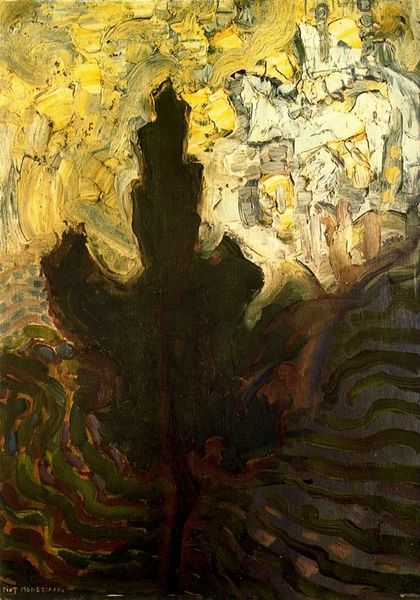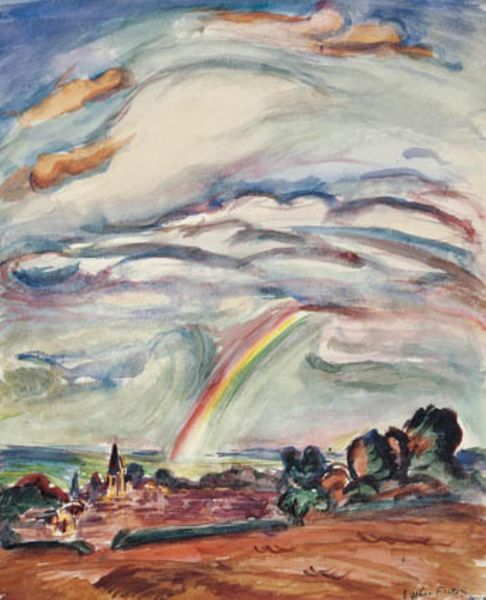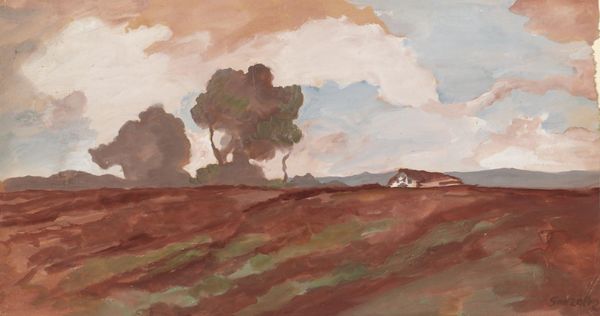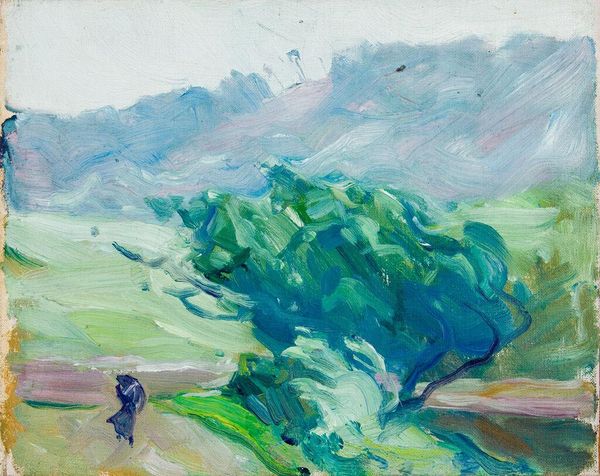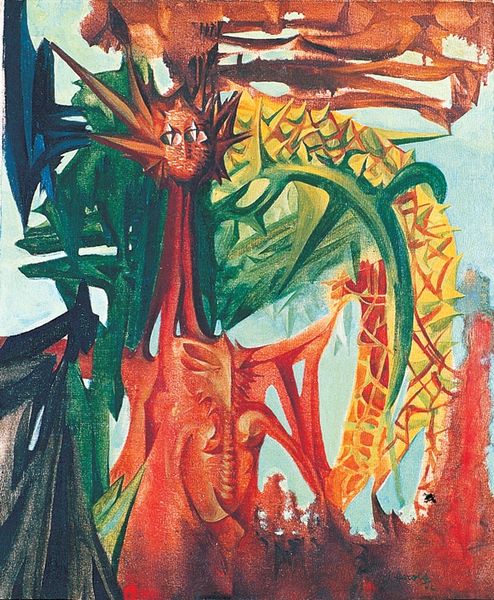
painting, oil-paint
#
painting
#
oil-paint
#
landscape
#
figuration
#
oil painting
#
expressionism
#
modernism
Copyright: Public domain US
Curator: Looking at this landscape, "A ventania," or "The Wind," painted in 1916 by Anita Malfatti, my immediate impression is one of swirling energy and turbulence. Editor: The brushstrokes themselves almost mimic the chaotic movement of a storm. I think it's crucial to remember that Malfatti was a key figure in introducing modernist aesthetics to Brazil. What looks like gestural abstraction was truly radical in its time. Curator: Exactly. The way Malfatti uses thick, almost sculptural, applications of oil paint is very significant. Note how she foregoes traditional modeling in favor of flattened forms and unnatural color combinations, typical of expressionism and other European modern art movements. It creates an incredible sense of dynamism. Editor: And we have to consider that this dynamism emerges in the context of a rapidly changing Brazil, one that’s caught between its colonial past and industrial aspirations. Her work spoke to, and unsettled, Brazil's aesthetic expectations in ways that resonate with other early 20th-century avant-garde movements that disrupted stagnant cultural norms, reflecting on the shifting societal winds during World War I. Curator: I see your point. Considering Malfatti’s palette of olive greens, yellows, and ochres and the lack of emphasis on perspective or illusionism, what meaning can we take away from her landscape? What elements strike you as being central to its success as an expressionist landscape? Editor: It successfully externalizes a raw, psychological state through the visualization of nature. Malfatti wasn't just painting trees, but embodying the inner emotional world onto a scene, capturing a world swept by not only physical, but also ideological and political changes. Curator: Looking again, the swirling lines force us to see the familiar world differently; what could easily be an everyday scene becomes powerful. The sheer application of paint builds depth—but ultimately it’s about communicating pure sensation and affect. Editor: Indeed. Viewing "A ventania" through a critical lens underscores Malfatti's position as a critical catalyst who didn’t simply adopt new aesthetics, but channeled social and cultural change into a unique visual language.
Comments
No comments
Be the first to comment and join the conversation on the ultimate creative platform.
